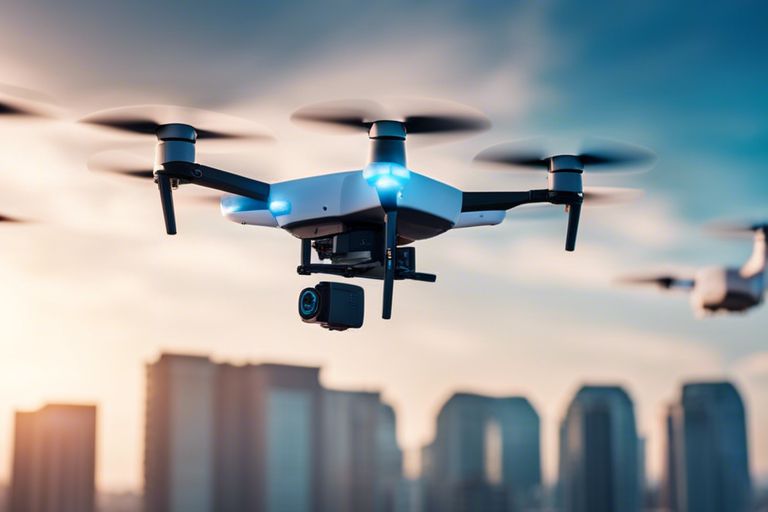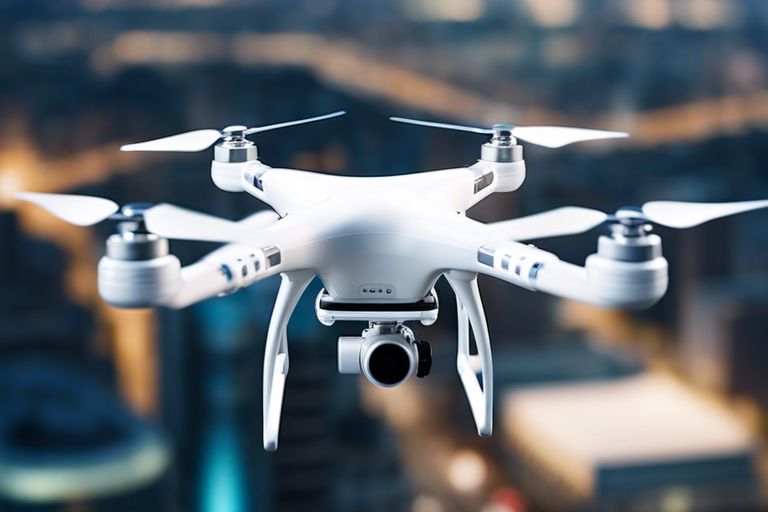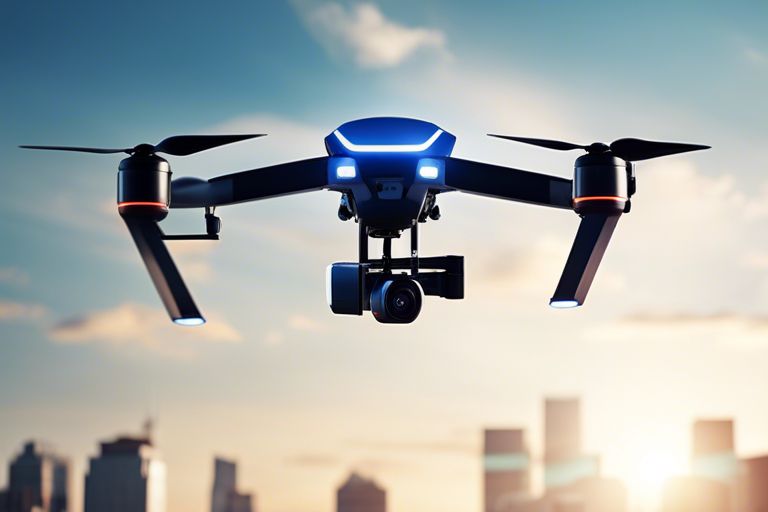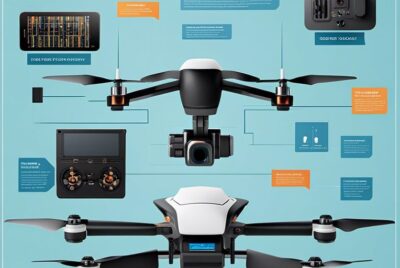“Drones in Healthcare – Medical Deliveries and Emergency Response”
There’s an innovative revolution taking place in healthcare with the integration of drones into medical deliveries and emergency response. Drones offer faster and more efficient ways to deliver medical supplies to remote areas, transport organs for transplant surgeries, and provide timely assistance during emergency situations. This blog post explores the impact of drones in revolutionizing healthcare delivery and emergency response practices, highlighting the benefits, challenges, and future potential of these unmanned aerial vehicles in the medical field.
Medical Deliveries by Drones
Benefits of Drone Deliveries in Healthcare
The integration of drones in healthcare for medical deliveries has revolutionized the way essential supplies reach patients in need. Drones have the capability to transport medical supplies swiftly and efficiently, overcoming traditional delivery constraints such as traffic congestion and geographical barriers.
Moreover, drone deliveries in healthcare have significantly reduced delivery times, enabling urgent medical supplies like blood units and medications to reach remote or inaccessible regions promptly. This rapid delivery of critical supplies can make a crucial difference in emergency situations, potentially saving lives.
Operational Models and Implementation Challenges
Healthcare organizations are exploring various operational models for integrating drones into their delivery systems. These models range from establishing dedicated drone delivery networks to collaborating with third-party drone service providers. However, challenges such as regulatory compliance, airspace restrictions, and public acceptance pose significant hurdles to the widespread adoption of drone deliveries in healthcare.
Healthcare providers must navigate these challenges by working closely with regulatory authorities, investing in drone technology, and developing robust logistical strategies to ensure the safe and efficient delivery of medical supplies. Overcoming these hurdles is crucial to fully harnessing the potential of drone deliveries in improving healthcare access and patient outcomes.
Healthcare organizations must carefully consider the operational models that best suit their delivery needs and navigate the implementation challenges effectively to ensure the successful integration of drone deliveries into their healthcare systems.
Drones in Emergency Response
Obviously, the use of drones in emergency response situations has revolutionized the way healthcare providers can deliver rapid medical assistance. Drones have shown incredible potential in improving response times and providing critical care to those in need, especially in remote or hard-to-reach areas.
Drones for Rapid Response and Emergency Care
One of the key advantages of using drones in emergency response is their ability to quickly reach the scene of an incident. Equipped with medical supplies, such as defibrillators, EpiPens, or even blood transfusion kits, drones can provide life-saving interventions within minutes, potentially saving precious time in critical situations. Additionally, drones can be used to transport lightweight medical samples for analysis, speeding up diagnostic processes and enabling faster treatment decisions.
Another benefit of utilizing drones in emergency care is their ability to access locations that may be difficult for traditional emergency vehicles to reach. Whether it’s delivering medical supplies to a remote rural area cut off by a natural disaster or providing support during a mass casualty event in a crowded urban environment, drones can navigate through challenging terrain and congested areas with ease.
Ethical and Regulatory Considerations
An important aspect of implementing drones in emergency response is addressing the ethical and regulatory considerations that come with their use. Ensuring patient privacy and data security, as well as establishing clear guidelines for drone operation in emergency situations, are crucial for maintaining ethical standards and public trust in this technology.
The integration of drones into emergency response protocols also raises questions about liability and accountability in case of any mishaps or accidents during drone operations. It is essential for healthcare organizations and emergency responders to have comprehensive risk management strategies in place to mitigate potential legal issues and ensure the safe and effective use of drones in emergency care.
The successful integration of drones into emergency response systems requires collaboration between healthcare providers, regulatory bodies, and technology developers to establish standardized protocols, training programs, and operational frameworks. By addressing ethical and regulatory considerations proactively, we can harness the full potential of drones to enhance emergency care and improve patient outcomes.

Technological and Logistical Considerations
To effectively utilize drones in healthcare, various technological and logistical considerations must be taken into account. These considerations encompass the design of the drones themselves, as well as the infrastructure and planning required for their seamless integration into healthcare services.
Drone Design and Technical Requirements for Healthcare Services
Logistical decisions around drone design for healthcare services must prioritize factors such as payload capacity, flight range, and reliability. Drones used for medical deliveries need to be equipped with temperature-controlled compartments to transport sensitive medications and samples safely. Additionally, the drones should have the capability to navigate urban environments and adverse weather conditions to ensure timely and efficient deliveries.
Infrastructure and Logistic Planning for Effective Deployment
For the successful deployment of drones in healthcare, careful infrastructure and logistic planning are essential. This includes establishing dedicated landing and take-off sites, optimizing flight paths to minimize disruptions to air traffic, and implementing real-time monitoring systems to track drone movements. Moreover, collaboration with regulatory bodies and local authorities is crucial to ensure compliance with relevant laws and regulations.
For instance, in emergency response situations, pre-identified landing zones and streamlined communication channels between drone operators and healthcare facilities can significantly reduce response times and improve patient outcomes. Effective infrastructure and logistic planning are fundamental to maximizing the potential of drones in enhancing healthcare services.
This chapter highlights the importance of considering both technological requirements and logistical challenges when integrating drones into healthcare services. By addressing these considerations, healthcare providers can harness the full potential of drone technology to improve medical deliveries and emergency response efforts.

The Future of Drones in Healthcare
Innovations and Emerging Trends
Despite being in its early stages, the use of drones in healthcare is already showing promising innovations and trends. For instance, researchers are exploring the potential of using drones equipped with advanced sensors to transport organs for transplants, reducing delivery times and potentially saving more lives. Furthermore, companies are developing drones that can autonomously deliver medical supplies to remote or disaster-stricken areas, ensuring timely access to critical medications and equipment.
Another emerging trend is the utilization of drones for telemedicine purposes, where medical professionals can remotely assess patients in hard-to-reach locations. Drones equipped with high-definition cameras and communication systems can provide real-time data to healthcare providers, allowing for quick decision-making and potentially improving patient outcomes.
Integrating Drones into the Broader Healthcare System
With the advancements in drone technology and the proven benefits in healthcare applications, integrating drones into the broader healthcare system is becoming more feasible. For instance, regulatory bodies are working on guidelines to ensure the safe and efficient operation of medical drones within existing healthcare infrastructures.

Final Words
With this in mind, drones have proven to be indispensable in the healthcare sector, facilitating medical deliveries and emergency responses with speed and efficiency. The utilization of drones in healthcare has not only improved the accessibility of medical supplies in remote areas but has also revolutionized emergency medical services by reducing response times and saving lives. As technology continues to advance, we can expect drones to play an even more significant role in the future of healthcare, continuing to enhance patient care and streamline critical medical operations.



